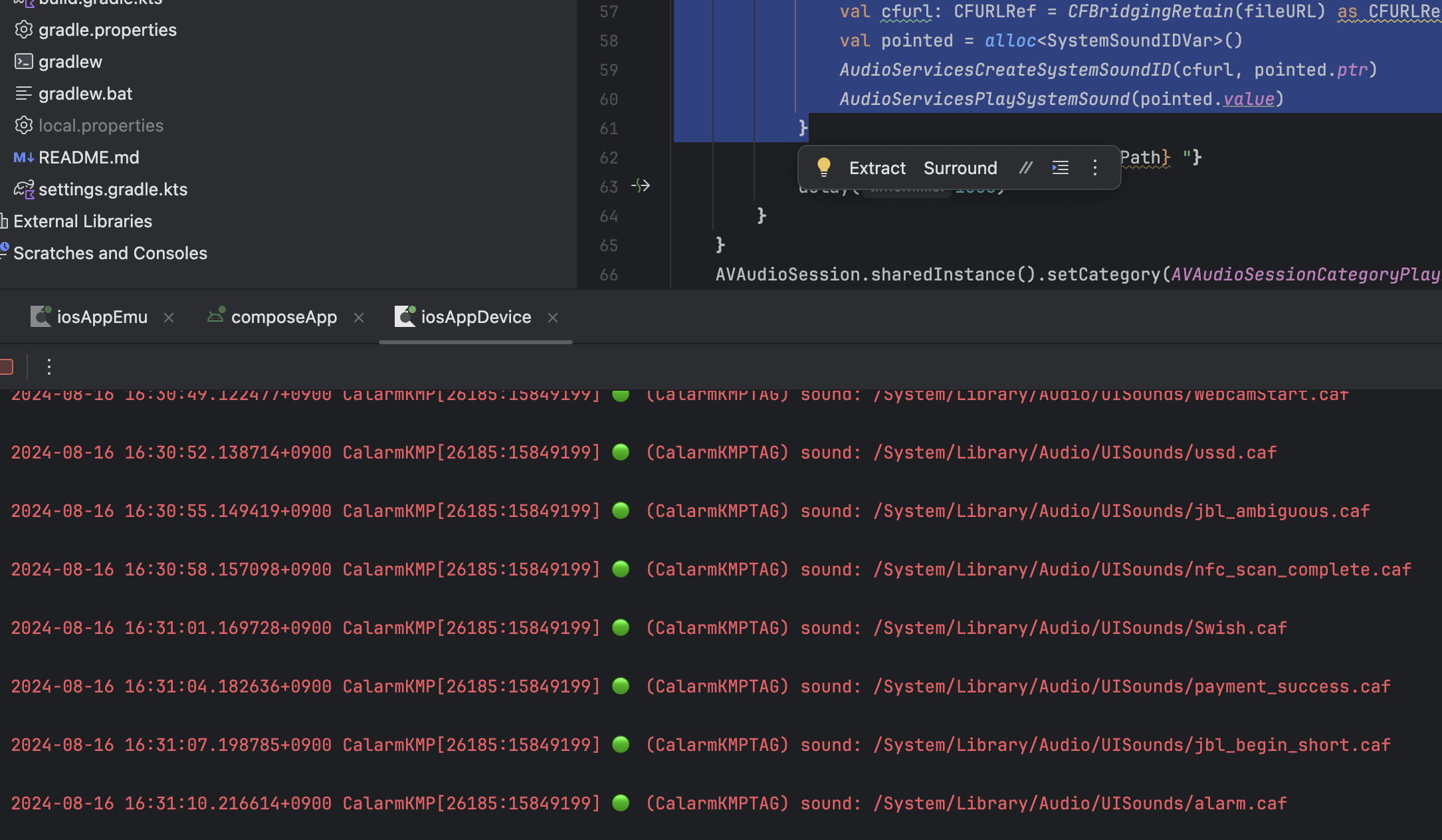
시스템 사운드를 가져올 때
Kotlin Multiplatform에서, Swift 언어를 사용하지 않아도 많은 부분의 네이티브 코드를 Kotlin으로 작성할 수 있는 것 같다.
현재 개발 중인 캘람 iOS 부분에서는 시스템 사운드를 사용해야 된다고 생각했는데 코틀린에서는 포인터 개념이 없거나 적고, 스위프트는 그런 개념이 있어서 스위프트 코드를 그대로 사용하는 데 많은 검색이 필요했다.
해당 내용을 간략하게 메모 겸 저장한다.
AudioServicesCreateSystemSoundID
var myAlertSound: SystemSoundID = 0
let url: URL = URL(string: "/System/Library/Audio/UISounds/Tock.caf")!
AudioServicesCreateSystemSoundID( (url) as CFURL, &myAlertSound)
AudioServicesPlaySystemSound(myAlertSound)Swift에서는 다음과 같이 myAlertSound, url를 참조하여야 하는 함수 AudioServicesCreateSystemSoundID를 이용하여 시스템 사운드 ID를 불러오고, 이 값을 이용해 AudioServicePlaySystemSound를 실행하여야 한다.
Koltin에서는 해당 블록 내에서 메모리를 할당/해제하는 것으로 보이는 Scope memScoped를 활용하여 특정 포인터 변수를 생성할 수 있다.alloc 함수가 그런 것인데, memScoped 내에서만 사용이 가능하다.
사운드 경로가 담긴 NSURL인 fileURL을 생성하고, 그의 참조를 가져오기 위해 CFBridgingRetain 함수를 사용하고 이를 CFURLRef로 강제 형변환한다. 찾아봤는데 찝찝하지만 이 방법 뿐인 것 같다.
memScoped {
val fileURL = NSURL(fileURLWithPath = soundPath)
val cfurl: CFURLRef = CFBridgingRetain(fileURL) as CFURLRef
val pointed = alloc<SystemSoundIDVar>()
AudioServicesCreateSystemSoundID(cfurl, pointed.ptr)
AudioServicesPlaySystemSound(pointed.value)
}그렇다면 AudioServicesCreateSystemSoundID를 쓸 준비가 되었고, pointed의 포인터 ptr을 같이 넘겨준다. 이 함수 실행 후에는 pointed에 원하는 시스템 사운드 ID가 들어가 있게 되었으니, pointed.value를 통해 그 값을 꺼내어 AudioServicesPlaySystemSound를 실행해주면 해당 경로의 시스템 사운드가 재생된다.
끝!
'코틀린 멀티플랫폼 KMP 개발 > 📚 KMP 공부' 카테고리의 다른 글
| Kotlin Native (iOS) 부분에서 Error 받아내는 CPointer 만들기 (0) | 2025.02.22 |
|---|
